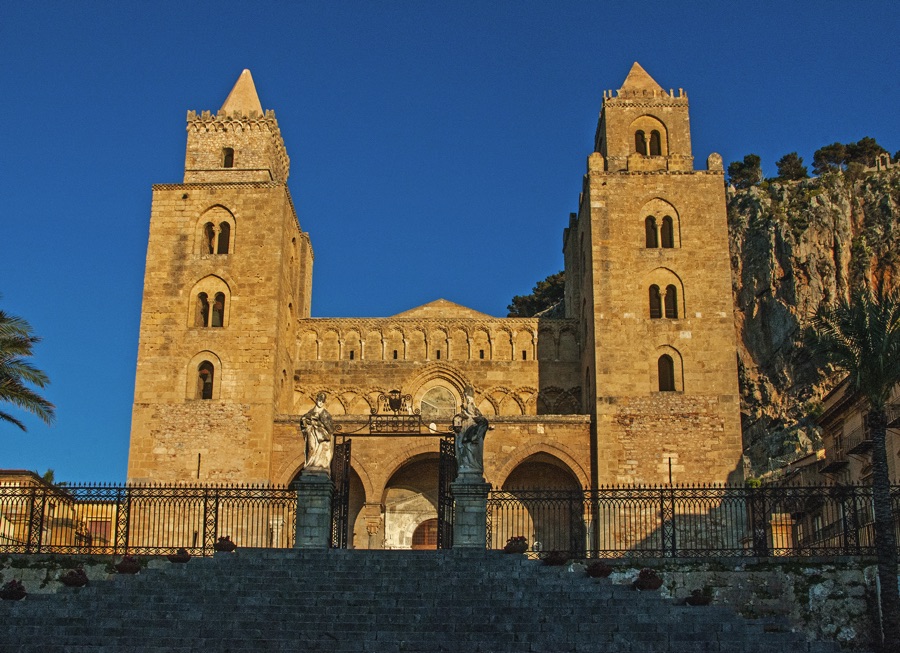The life of the Cathedral is also narrated through frescoes preserved within the walls of functional places, such as the towers, which are not always used to exalt beauty.
The infiltration of rainwater, starting in the first two decades of the 13th century, inside the massive architectural structures had already compromised the whitewashed or plastered walls of the lower area, characterised by its shapeless stonework.
They were punctuated by dynastic and regal paintings, divided into five scenes, celebrating the sovereigns of Sicily who became part of the historical events of the Cefalu church. The first scene depicts
Roger II
holding the Holy Trinity with one hand.
The Saviour, the religious building and, with the other hand, the cartouche relating to the privileges with which he had endowed it.
The figure of
William I
occupied the second panel in memory of the confirmation of privileges, to which the donation of the Syracuse Church of St Lucia was also added.
King William II
, whose actions validated the privileges bestowed on the Church by his ancestors, stood out in the third panel.
A further confirmation of the ancient privileges occupied the upper panel with the figure of Constance, who also offered the
village of Odosuer
as a gift to the Cathedral. The fifth scene reverses the compositional theme of the preceding scenes, as it contains a political claim represented by the presence of
Frederick II of Swabia
, who drives
Bishop Giovanni
away from the Temple of Cefalù.
Because of its location outside the Cathedral, the painting was aimed those who could not enter and/or did not have any means to counter the sovereign’s interference designed to deny their rights. Traces of a probable sketch, referring to these paintings and difficult to read, seem to have emerged on some of the southern tower’s ashlars.